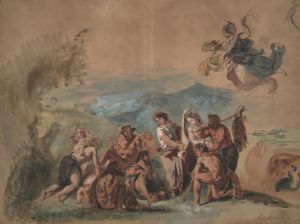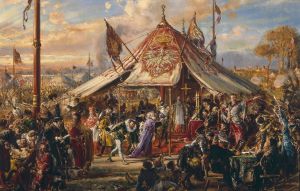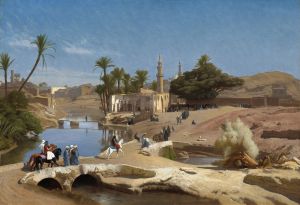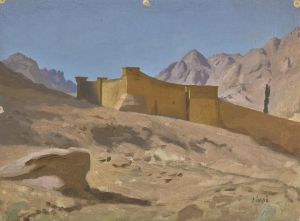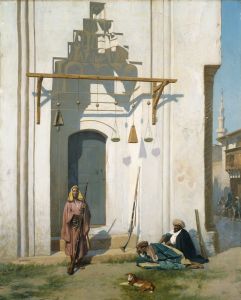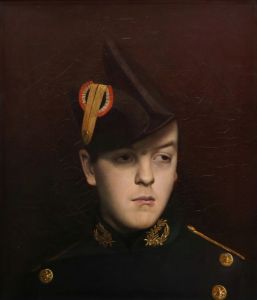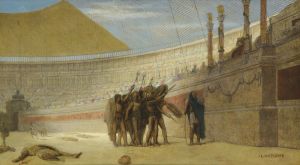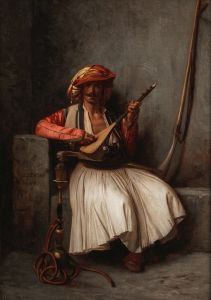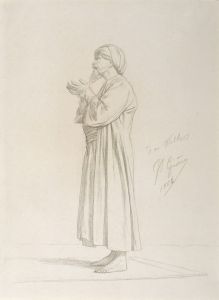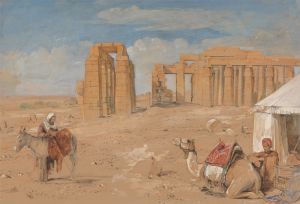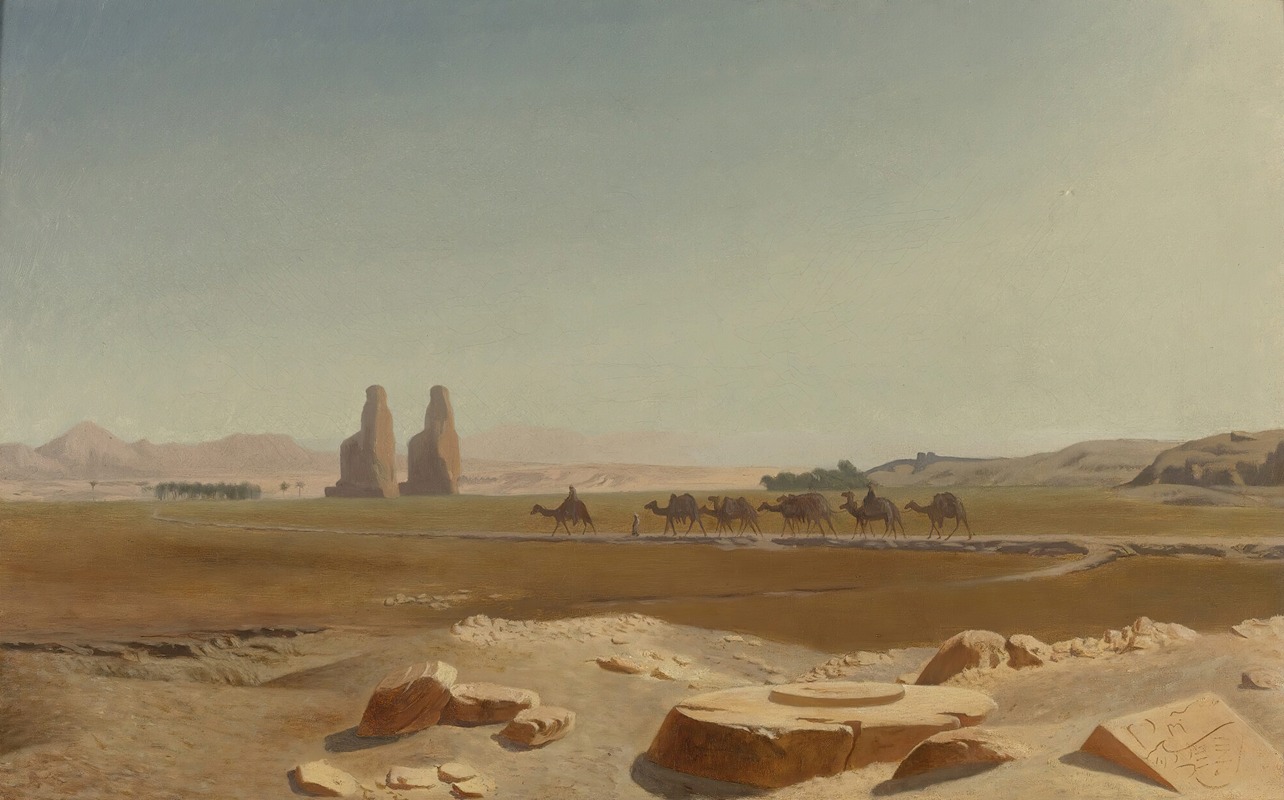
Caravan Passing The Colossi Of Memnon, Thebes
A hand-painted replica of Jean-Léon Gérôme’s masterpiece Caravan Passing The Colossi Of Memnon, Thebes, meticulously crafted by professional artists to capture the true essence of the original. Each piece is created with museum-quality canvas and rare mineral pigments, carefully painted by experienced artists with delicate brushstrokes and rich, layered colors to perfectly recreate the texture of the original artwork. Unlike machine-printed reproductions, this hand-painted version brings the painting to life, infused with the artist’s emotions and skill in every stroke. Whether for personal collection or home decoration, it instantly elevates the artistic atmosphere of any space.
"Caravan Passing The Colossi Of Memnon, Thebes" is a painting by the renowned French artist Jean-Léon Gérôme, created in 1857. Gérôme was a prominent figure in the academic art movement of the 19th century, known for his detailed and historically accurate depictions of scenes from antiquity and the Orient. This particular work exemplifies his fascination with ancient Egyptian culture and his skill in capturing the grandeur of historical landscapes.
The painting portrays a caravan of travelers passing by the Colossi of Memnon, two massive stone statues located on the west bank of the Nile River, near the modern city of Luxor, Egypt. These statues are representations of Pharaoh Amenhotep III and have stood in the Theban necropolis since the 14th century BCE. They were originally part of a mortuary temple that has largely disappeared over the millennia.
Gérôme's depiction is notable for its attention to detail and atmospheric perspective, which conveys the scale and majesty of the ancient monuments. The Colossi are shown towering over the figures of the caravan, emphasizing their monumental size and the enduring legacy of ancient Egyptian civilization. The painting captures the interplay of light and shadow on the statues, highlighting the texture of the stone and the effects of time and weather on their surfaces.
The composition of the painting is carefully balanced, with the caravan positioned in the foreground, leading the viewer's eye towards the statues in the background. This arrangement not only provides a sense of depth but also creates a narrative of movement and exploration, as the travelers journey through the historic landscape. Gérôme's use of color is subtle yet effective, with earthy tones dominating the scene, reflecting the arid environment of the Egyptian desert.
Gérôme's interest in Orientalism, a genre that romanticized and often stereotyped the cultures of the Middle East and North Africa, is evident in this work. However, unlike some of his contemporaries, Gérôme was known for his commitment to accuracy and often conducted extensive research to ensure the historical and cultural authenticity of his paintings. His travels to Egypt and other parts of the Middle East provided him with firsthand experience and inspiration, which he incorporated into his art.
"Caravan Passing The Colossi Of Memnon, Thebes" is a testament to Gérôme's ability to blend historical accuracy with artistic imagination. It reflects the 19th-century European fascination with ancient Egypt and the broader cultural and artistic trends of the time. The painting remains an important example of Gérôme's work and continues to be appreciated for its technical skill and evocative portrayal of a bygone era.
Today, Gérôme's paintings, including this one, are held in high regard and can be found in various museums and private collections around the world. His work continues to be studied and admired for its contribution to the academic art tradition and its influence on the perception of ancient and exotic cultures in Western art.





![Dayr el Medeeneh [Dayr al-Madînah], Thebes.](/imgs/217473/s/david-roberts-dayr-el-medeeneh-dayr-almadinah-thebes-248e9138.jpg)
![Dendera [Dandara]. Dec. 1838.](/imgs/217474/s/david-roberts-dendera-dandara-dec-1838-6eb01a73.jpg)
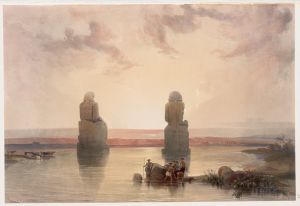
![Temple of Wady Kardassy [Qirtâsî] in Nubia.](/imgs/217550/s/david-roberts-temple-of-wady-kardassy-qirtasi-in-nubia-d2cce283.jpg)
